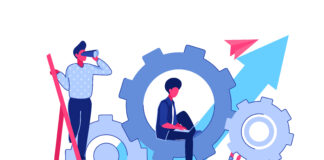In today’s rapidly advancing technological world, behavioral prediction software powered by artificial intelligence (AI) has become a game-changer for businesses and industries alike. By leveraging machine learning algorithms and advanced data analytics, behavioral prediction software enables companies to gain deep insights into customer behavior, trends, and future actions. This type of AI-driven software is crucial for personalized marketing, customer service optimization, and predictive analytics in various sectors. As it continues to evolve, understanding the implications and uses of behavioral prediction software is essential for businesses looking to stay ahead of the curve in the digital landscape.
1. The Role of AI in Behavioral Prediction
AI-powered behavioral prediction software plays a crucial role in shaping modern strategies for customer engagement. Through advanced algorithms, this software analyzes vast amounts of data, allowing businesses to predict the likelihood of certain actions or behaviors by consumers or employees. The system uses past behaviors, patterns, and external variables to predict future outcomes, helping companies make more informed decisions. For example, in the retail industry, AI models can predict when a customer is likely to purchase a product, while in healthcare, it can predict which patients are most at risk of specific medical conditions. Understanding how AI applies to behavioral prediction opens doors for automation, personalization, and improved customer service.
2. How Behavioral Prediction Software Enhances Customer Experience
One of the main uses of behavioral prediction software is enhancing the customer experience. By analyzing user data, companies can tailor their offerings to meet individual needs, providing a highly personalized experience. Predicting customer behavior allows businesses to proactively offer the right product or service at the right time, enhancing customer satisfaction and increasing the likelihood of conversion. This is particularly impactful in industries like e-commerce, where predicting a customer’s next purchase can guide marketing strategies and product recommendations. As the system gathers more data, it continues to refine its predictions, improving over time and enabling even more targeted and effective customer interactions.
3. Applications in Marketing and Advertising
In marketing and advertising, behavioral prediction software is a game-changer, enabling hyper-targeted campaigns. By analyzing past consumer behavior, the software predicts which ads, messages, or offers are likely to resonate with different customer segments. Predictive analytics allow marketers to craft personalized campaigns that increase engagement, conversion rates, and ROI. For example, a brand can use AI to identify a customer’s browsing patterns and deliver customized advertisements based on those behaviors. By understanding what drives a customer’s decision-making process, businesses can optimize their marketing strategies and target specific groups with greater accuracy.
4. Predicting Financial Behavior
In the financial sector, behavioral prediction software is revolutionizing the way institutions manage risk and make investments. AI models analyze consumer spending habits, investment choices, and other behavioral data to predict future financial actions. This predictive capability enables financial advisors and banks to provide more personalized advice and create tailored financial products. Moreover, it can help in identifying patterns that signal potential financial risks or opportunities. By using AI to predict market movements and investor behavior, financial institutions can mitigate risks and make better investment decisions.
5. Behavioral Prediction for Employee Management
Behavioral prediction software is also being used to optimize employee management. By analyzing workplace behaviors, AI can predict employee turnover, identify potential for burnout, and even forecast future leadership capabilities. Companies can use this information to tailor their HR practices, improve employee retention, and boost morale by addressing potential issues before they arise. In fact, predictive analytics are becoming essential tools in human resource management, helping organizations to better understand their employees’ needs, motivations, and actions.
6. Ethical Considerations in Behavioral Prediction
As with any AI-driven technology, there are ethical concerns surrounding behavioral prediction software. The accuracy of predictions depends on the quality and quantity of data used, and this can raise privacy issues. For instance, collecting and analyzing personal data without consent can lead to violations of privacy laws. Furthermore, there is the risk of reinforcing biases in AI models, especially when the data used to train the models is skewed or unrepresentative. Businesses must balance the power of predictive technology with the responsibility to protect consumers’ rights and privacy.
7. The Impact of Behavioral Prediction Software on Healthcare
In the healthcare sector, behavioral prediction software plays a vital role in patient care and medical outcomes. AI systems are being used to predict patient behaviors, such as adherence to prescribed treatments, lifestyle choices, and follow-up care. This predictive capability allows healthcare providers to intervene early, improve patient outcomes, and reduce the risk of chronic conditions. For example, predicting whether a diabetic patient is likely to skip medication can help healthcare providers send reminders or offer support, improving patient adherence and preventing serious health complications.
8. Real-Time Predictive Analytics for Customer Service
Another exciting application of behavioral prediction software is its use in enhancing customer service. AI-powered tools can analyze customer interactions in real time, predicting customer sentiment and behavior during chats or phone calls. This allows customer service representatives to anticipate issues, personalize their responses, and resolve queries more efficiently. Additionally, predictive analytics can help companies identify potential problems before they escalate, improving the overall customer experience and reducing churn.
9. The Future of Behavioral Prediction Software
The future of behavioral prediction software is bright, with continuous advancements in AI and machine learning. As data becomes more abundant and technology improves, AI models will become increasingly accurate in predicting human behavior. Future applications may include more precise recommendations in entertainment, enhanced product development strategies, and even smarter decision-making tools for businesses. AI will likely continue to be a transformative force in understanding and predicting behaviors across various industries, creating a more personalized and efficient world.
10. Challenges and Limitations of AI in Behavioral Prediction
Despite the remarkable potential of behavioral prediction software, there are challenges and limitations that need to be addressed. One of the key challenges is the accuracy of the predictions. AI models can only predict based on historical data, and the accuracy of the predictions may vary depending on how the data is processed and interpreted. Additionally, the reliance on data raises concerns about biases, transparency, and accountability. For AI to reach its full potential, continuous efforts are required to ensure that the data used is unbiased, diverse, and representative of the population it is intended to serve.
Conclusion
In conclusion, behavioral prediction software powered by AI is revolutionizing industries by providing deeper insights into consumer and employee behaviors. Whether in marketing, finance, healthcare, or human resources, predictive analytics is enabling businesses to make smarter decisions, improve customer experiences, and optimize operations. However, as with any emerging technology, challenges such as privacy concerns, data biases, and accuracy limitations need to be addressed. As AI continues to evolve, the potential for behavioral prediction software is limitless, transforming the way businesses understand and respond to human behavior, ultimately driving innovation and growth in a data-driven world.














